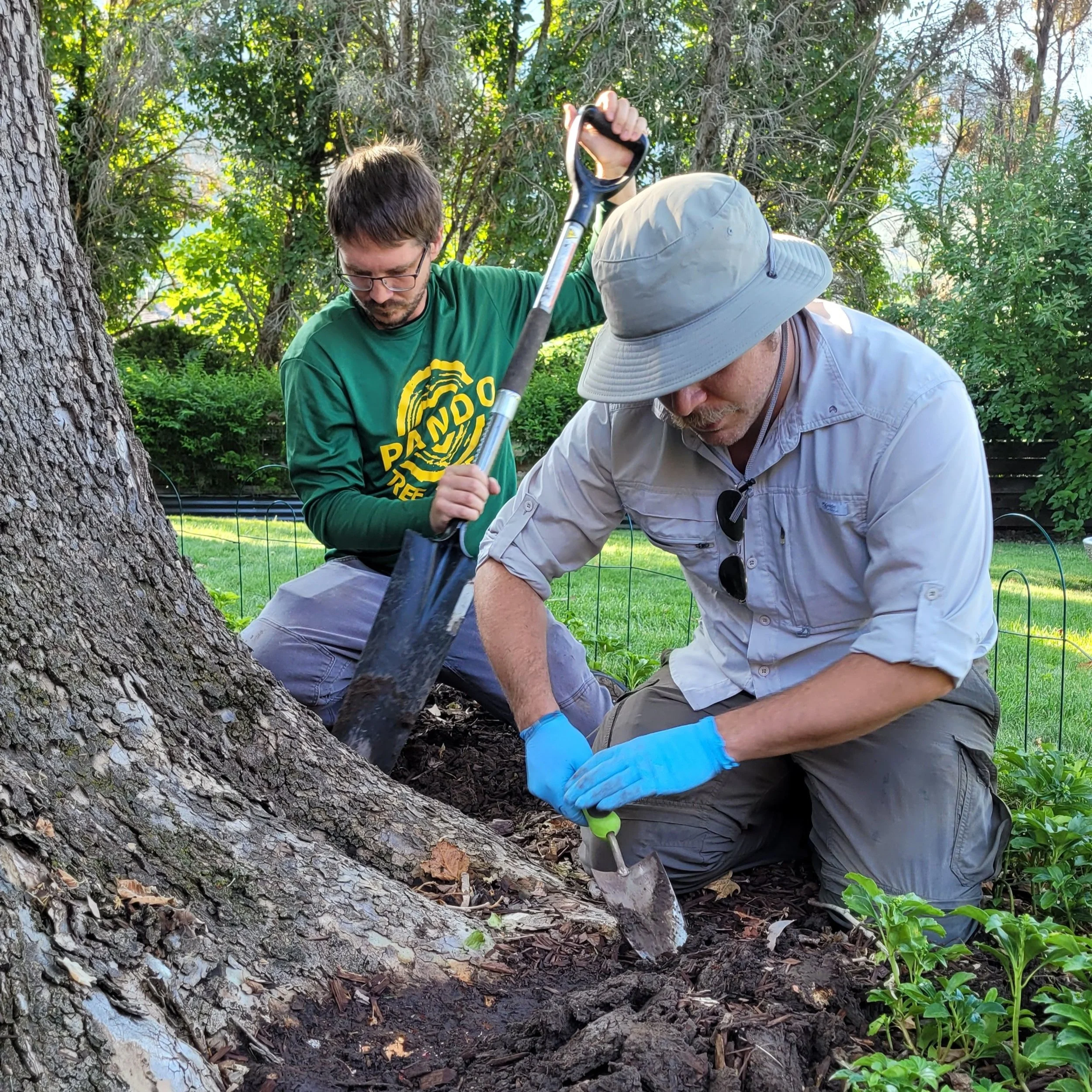Cambistat® At a Glance
For woody landscape plants, the growth regulator Cambistat® is used for size management, disease resistance, and environmental tolerance.
Benefits of Cambistat®
The reduction in growth results in many secondary benefits!
- Drought tolerance
- Tolerance of nutrient-poor soils
- Maintain size with less frequent pruning
- Increased energy production
- Fungal resistance
- Improved immune system
- Lower risk of branch failure
IN DEPTH
Growth regulators are a class of products that alter the growth pattern of plants. They are commonly used for nursery flowers (growing dense chrysanthemums), fruit production (ripening and fruit abscission), turf grass health (thickening and reduced mowing), and many other goals.
For woody landscape plants, growth regulators are used primarily for size management, disease resistance, and environmental tolerance.
We use two products: Cambistat® and Trimtect®, both have the same active ingredient of paclobutrazol. The two products differ in their formulation and application. Cambistat® is formulated for soil applications and trees to take up paclobutrazol by roots. Trmitect® is a foliar spray and is usually used mainly for hedges.
What Happens in a Tree when Cambistat® is applied?
There are different compounds both natural and synthetic that affect plant growth. Gibberellins are natural plant compounds that stimulate cell elongation and division. The two products that Pando Tree Company uses to regulate plant growth are gibberellin inhibitors. When gibberellin inhibition takes place in a tree, cell division still occurs, but elongation is suppressed. So you still grow the same amount of cells, leaves, branch nodes, flowers, etc., but they are compressed into a shorter length. Energy production and health are not reduced, they actually improve!
Aside from the length reduction, there is:
- Improved energy production due to an increase in phytol (component of chlorophyll, a critical pigment used for food production within a plant).
- Improved resistance to environmental stresses like drought. This is due to an increase in abscisic acid (plant hormone important in responses to environmental stress).
- Changes in morphology that help retain water (smaller stomata pores, thicker leaf cuticles, increased branch ramification, and increased root density).
- Some protection from fungi via sterol biosynthesis inhibition.
Benefits of Growth Regulators
There are many benefits to using growth regulators on your landscape plants, especially in Utah!
Size management
Land owners often have concerns about trees growing too large for their space. Some companies will “top” trees, which is an outdated practice never recommended by a skilled arborist. Growth regulators can help keep a plant to a size appropriate for its space, without causing massive wounds across the canopy. Growth regulation actually has a slew of other secondary health benefits thanks to the reduction in elongation!
Drought Tolerance
Utah is no stranger to drought stress. When growth regulators are applied they help trees stay healthy during droughts.
When trees are treated, the pores that release water become smaller, the leaf cuticle thickens, and the root network gets denser. All of these help with water retention and drought tolerance.
Pine tree at Bryce Canyon National Park. Photo ©2018 Ryan Quinn
tolerance of poor soils
Utah soils have a very different profile compared to the rich soils of the Midwest. Our soils have fewer micro-nutrients available such as iron and magnesium. To make matters worse, many landscape plants used in Utah are natural to very different environments with differnt soils.
Most plannts prefer a slightly acidic pH. Utah soils are alkaline, which most trees planted here in Utah aren’t adapted to. So even if there are sufficient micro-nutrients in the soil, it may not be usable to a plant due to soil pH. When you decrease the elongation of plants, they no longer need as many nutrients to sustain their growth. The increased root density also helps utilize the nutrients that are present.
Reduced need for pruning
Pruning requires physically removing material from plants, when cutting back live material, this creates wounds that require energy and time to heal. These wounds can also open a tree to decay and disease. Although quality pruning is still important for developing and maintaining a good canopy structure, growth regulators help reduce the frequency of pruning events.
Furthermore, pruning requires a crew of skilled arborists and specialized heavy-equipment whereas a growth regulator application can be done by a single arborist on the ground. Over time, this helps tree owners improve the return on investment.
Stability (reduced internodal spacing)
The reduction in elongation creates a denser network of branches. This helps reduce the leverage applied to branches in wind and snow events.
Resistance to pests and diseases
Environmental factors are usually the first step in the spiral of decline in a plant. The benefit of increased drought tolerance is huge for protecting plants against pests and diseases. Not only that, the energy saved from reduced elongation can instead be spent on a plant’s immune system. Even more! The physiological changes such as thickening of leaf cuticles can help leaves stay protected from fungi that damage leaves.
Cambistat® is frequently used together with other products when treating certain diseases such as:
- Anthracnose: Arbotect® + Cambistat®
- Nutrient deficiencies: iron and manganese injections + Cambistat®
Greener leaves and fall colors
All these health benefits result in a more vibrant plant. This is especially beneficial for plants struggling with nutrient deficiencies like chlorosis in Autumn Blaze maples.
Photo of hardwood forest in New York. 2020© Ryan Quinn




